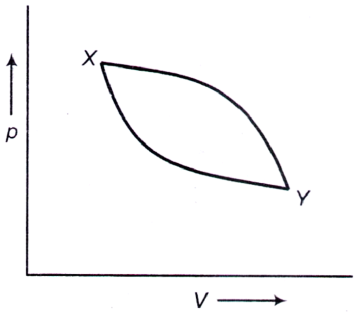The partition function of a single gas molecule is $${{Z_\alpha }}$$ . The partition function of N such non-interacting gas molecules is then given by
A. $$\frac{{{{\left( {{Z_\alpha }} \right)}^N}}}{{N!}}$$
B. $${\left( {{Z_\alpha }} \right)^N}$$
C. $$N\left( {{Z_\alpha }} \right)$$
D. $$\frac{{{{\left( {{Z_\alpha }} \right)}^N}}}{N}$$
Answer: Option B
A. $$\frac{1}{{1 + {e^{ - \varepsilon /{k_B}T}}}}$$
B. $$\frac{1}{{1 + 2{e^{\varepsilon /{k_B}T}}}}$$
C. $$\frac{1}{{2{e^{\varepsilon /{k_B}T}} + 4{e^{2\varepsilon /{k_B}T}}}}$$
D. $$\frac{1}{{2{e^{\varepsilon /{k_B}T}} - 4{e^{2\varepsilon /{k_B}T}}}}$$
A. $$\frac{1}{6}{E_F}$$
B. $$\frac{1}{5}{E_F}$$
C. $$\frac{2}{5}{E_F}$$
D. $$\frac{3}{5}{E_F}$$
A. clockwise
B. counter-clockwise
C. neither clockwise nor counter-clockwise
D. clockwise from X → Y and counter-clockwise from Y → X
A. $$\exp \left( {\frac{{\hbar \omega }}{{{k_B}T}}} \right) + 1$$
B. $$\exp \left( {\frac{{\hbar \omega }}{{{k_B}T}}} \right) - 1$$
C. $${\left[ {\exp \left( {\frac{{\hbar \omega }}{{{k_B}T}}} \right) + 1} \right]^{ - 1}}$$
D. $${\left[ {\exp \left( {\frac{{\hbar \omega }}{{{k_B}T}}} \right) - 1} \right]^{ - 1}}$$


Join The Discussion